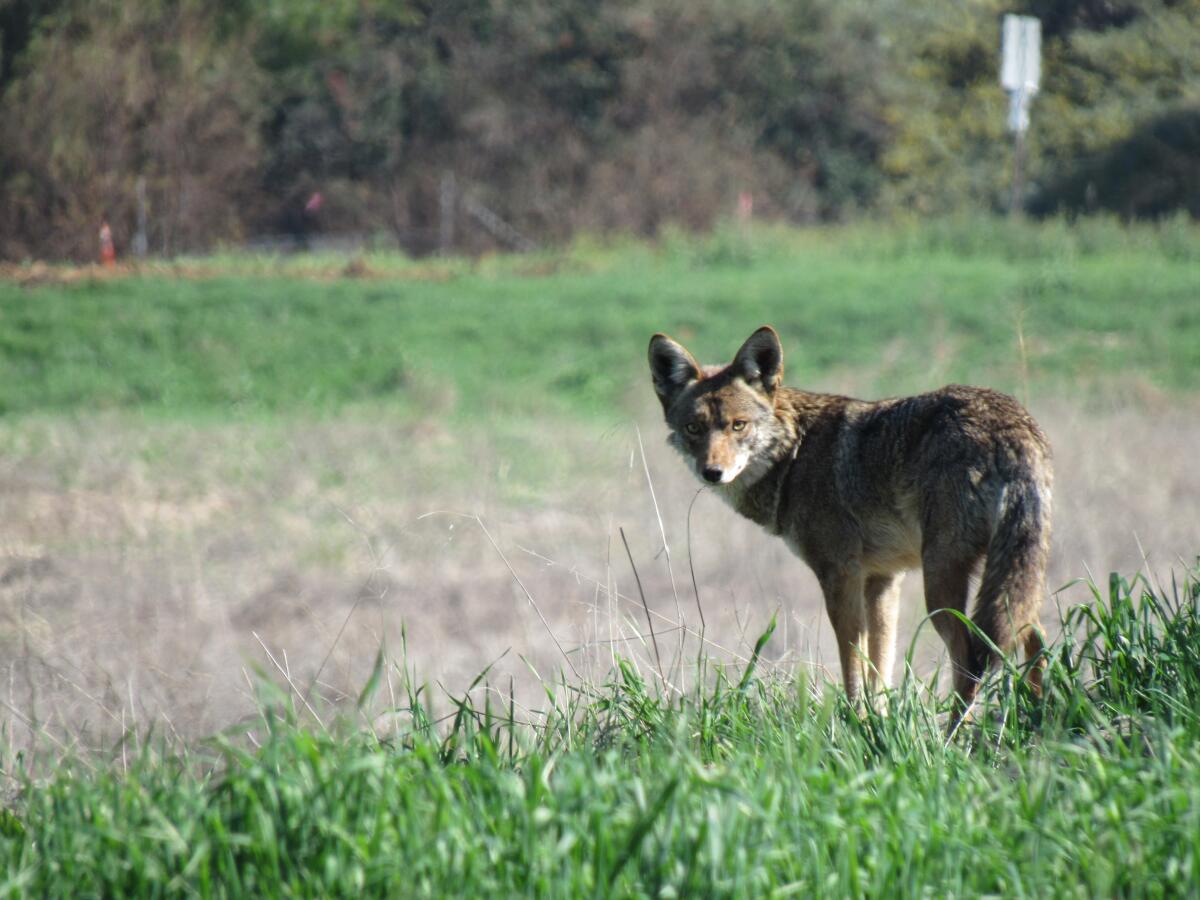Letters to the Editor: Coyotes aren’t a nuisance. It’s their world, and humans live in it

- Share via
To the editor: As much as I’ve enjoyed Sandy Banks’ columns through the years, I must take issue with her characterization of wild coyotes’ presence in her suburban neighborhood.
In truth, any “reign of terror” being perpetrated there stems from humans’ ubiquitous war on wildlife.
Banks concedes that human housing has invaded the coyotes’ natural habitat. Yet she villainizes them for adapting to our trespass.
Any “unrepentant hoodlums” are the residents who have dispossessed the coyotes; any “scourge” she perceives was wholly foreseeable, not “unpredictable.”
Rather than demonize coyotes for being coyotes, Banks should keep in mind that they aren’t able to earn a living by writing newspaper columns.
Sandra Perez, Santa Maria
..
To the editor: One of my favorite reads, by Dan Flores, was “Coyote America.” Forever portrayed as “terrorizers” preying on small pets and civilization at large, coyotes are in fact remarkably similar to humans (adaptable and self-reliant) and arguably the most American animal.
Furthermore, coyote stories are the oldest and some of the most significant literature belonging to the first peoples of the Americas (see “Trickster Makes This World,” by Lewis Hyde).
I lost pets to coyotes, growing up in Banning, but their howls and presence are an inextricable part of the American experience. The flora and fauna that make our environment are not forces of nature to be dislodged; they are our lodge.
Isaac Jorgensen, Hemet
..
To the editor: As Banks points out, humans’ relentless development has brought us into close proximity with our neighborhoods’ original inhabitants, including coyotes. We must learn to coexist peacefully with wildlife.
But we must also stop luring coyotes to our yards by keeping our cats indoors, as all responsible guardians should.
Letting cats roam is like setting out an all-you-can-eat buffet for hungry coyotes. One study found that cats made up 42% of urban coyotes’ diet, and more than half of the time, cats did not survive an encounter with these animals.
Keeping cats indoors is also vital to protect them from traffic, poison, contagious diseases, cruel people and countless other dangers that can cut their lives short. It also protects vulnerable birds, amphibians and other wildlife, who stand no chance against cats’ jaws and claws.
Lisa Lange, Los Angeles
The writer is a senior vice president at People for the Ethical Treatment of Animals.




